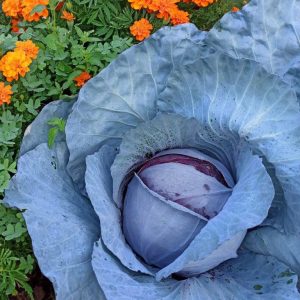The vegetables in the finca garden were no longer growing properly. For several years there were difficulties here and there, but at the beginning of 2022 you could really talk about a ‘failure’. At that point, we began doing some research into the causes and into a reorientation. We would like to give you a little insight about that in the following.
We developed different approaches. First, we had the soil analyzed, which after some research led us to add gypsum to the soil. We did this before planting the summer vegetable crops.
In parallel, we started making biochar based on the model of terra preta. This charcoal is very fine-pored and works like a sponge. It can absorb nutrients, store and gradually release them into the soil. Before it can be worked into the soil, however, it must first be enriched with nutrients. So we started experiments with different composting options.
As another innovation, we abandoned hoeing the soil this year for the first time because we learned from our Internet research and also in conversation with a Spanish organic gardener that the soil life is disturbed by such tillage, and we did not want that.
All our efforts and innovations helped the summer vegetables we planted to grow quite well, but we were still not fully satisfied. So we kept on researching. One thing became clearer and clearer: there seemed to be one basic answer to why we had all these problems – our soil was not sufficiently revitalized. There was a lack of little animals such as earthworms, beetles or woodlice, and of microorganisms such as bacteria, fungi and protozoa. So now, in addition to mulching, rooting the soil and composting, we work with effective microorganisms or EM for short. We are amazed at how well the winter vegetable crops planted in July and August have grown, all of which received EM gifts from the beginning. We have gorgeous beets and wonderful peppers.
We were also able to use the charcoal compost we had put on when planting the winter vegetables. And we’ve had good success with that so far, too. We have had lush lettuce and the cabbage is also developing well.
Now we are learning how to make good, species-rich compost, working our way into the diverse, rich soil life and the world of microorganisms. Because all this is an important prerequisite for good vegetables. Food that grows in a well-inhabited soil is of high quality and contains many nutrients – a great goal!
We will report about our further experiences here from time to time.



